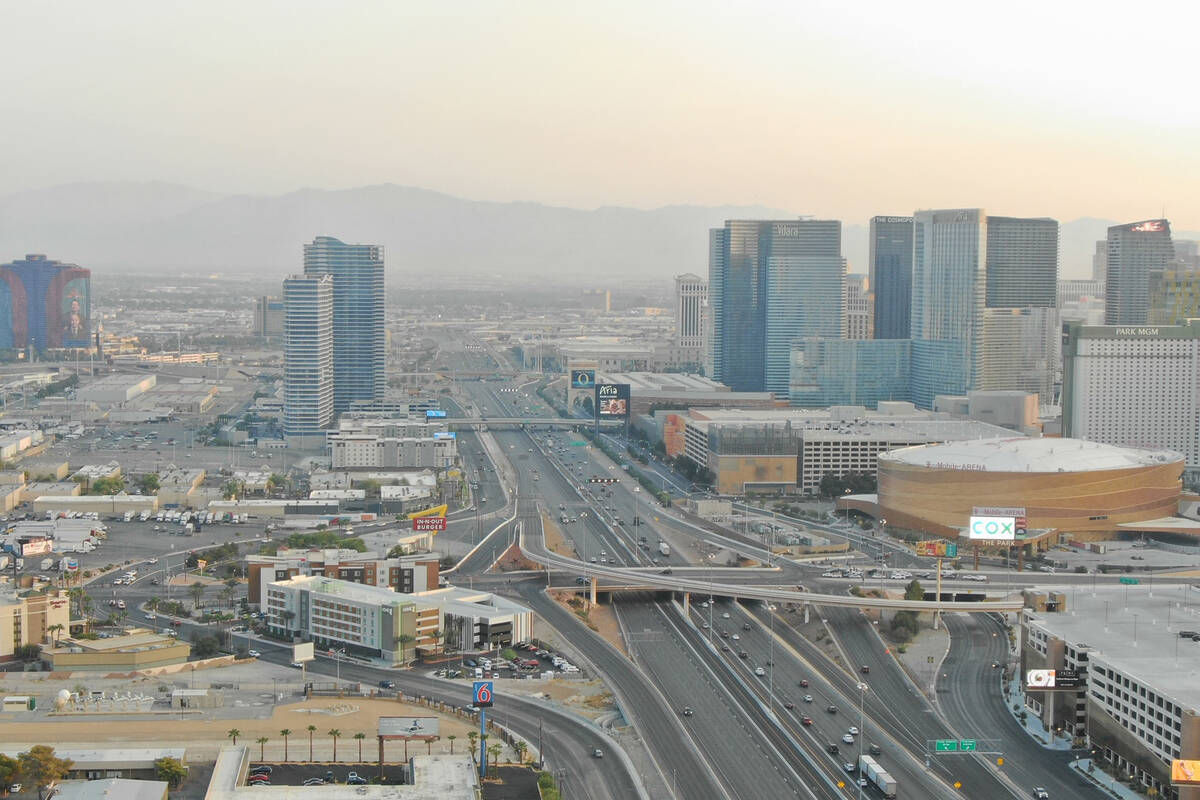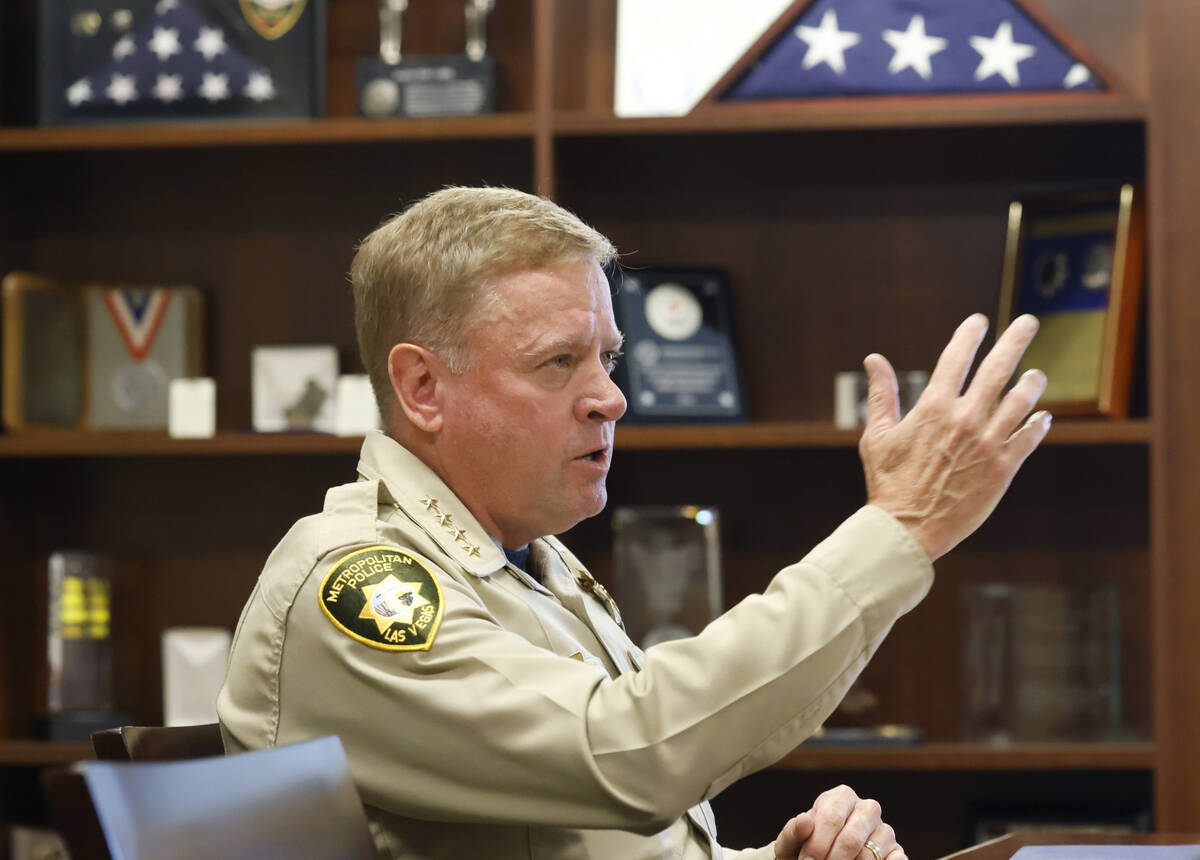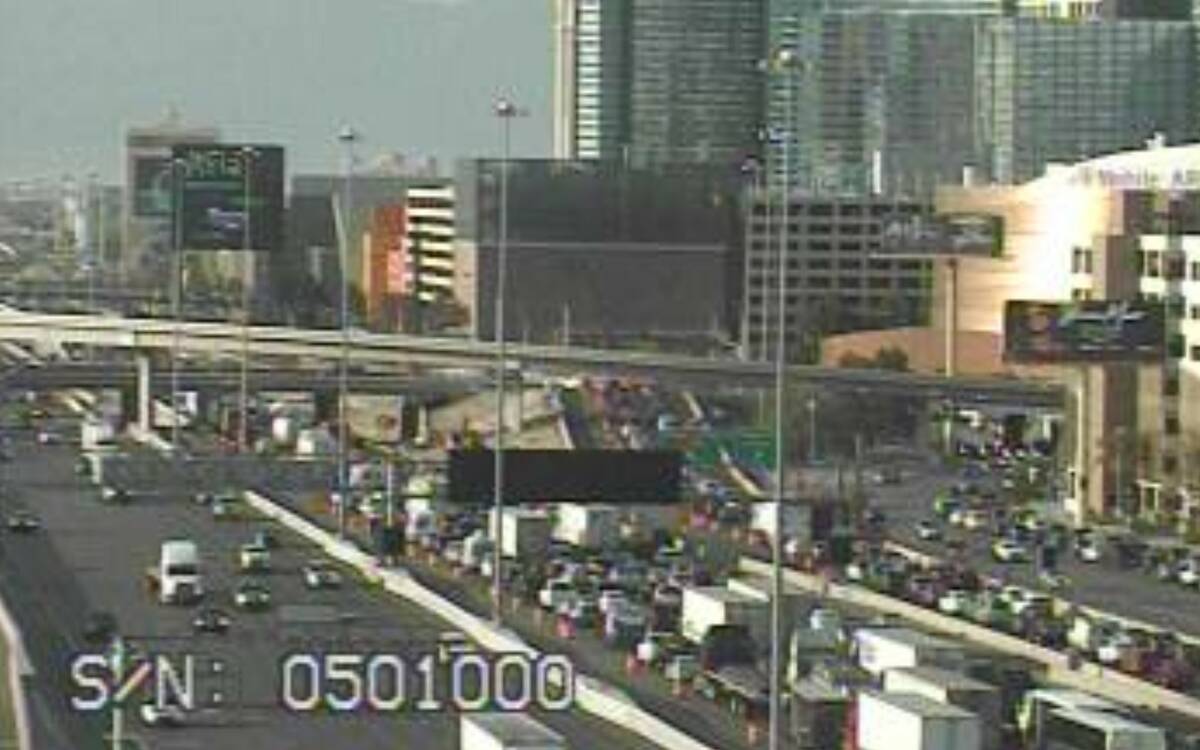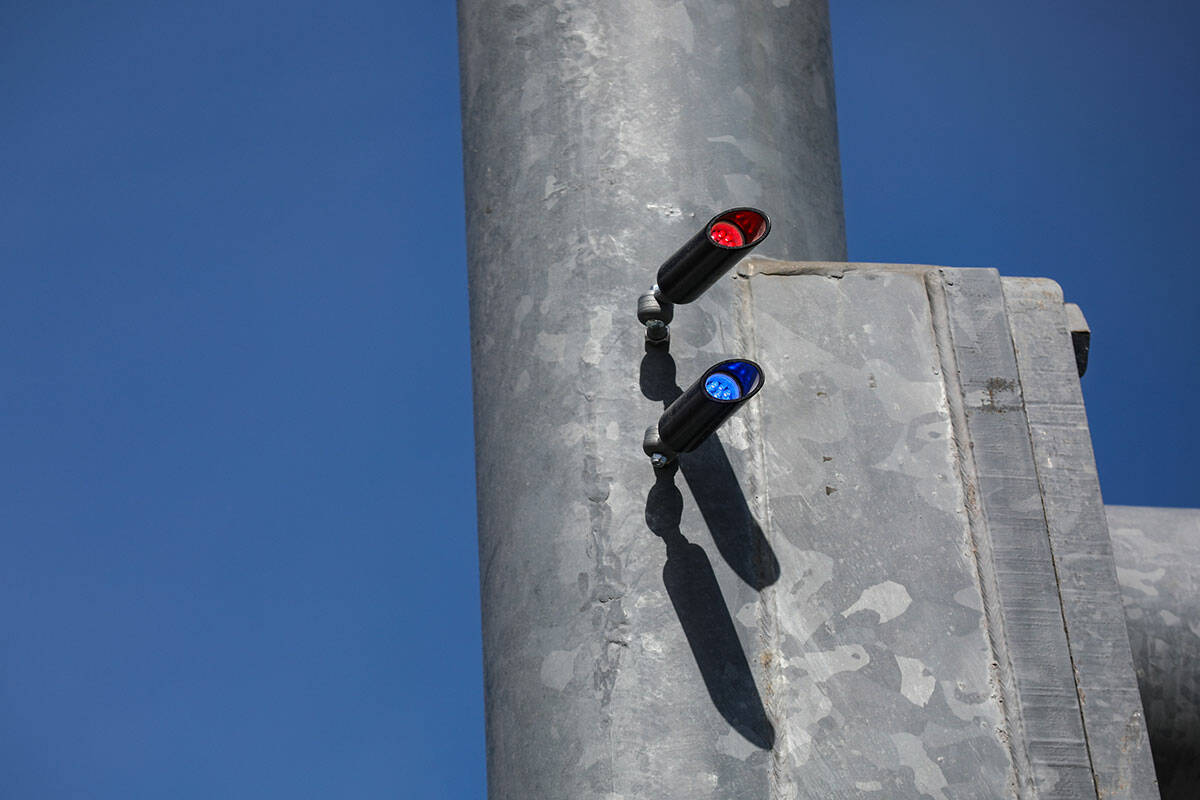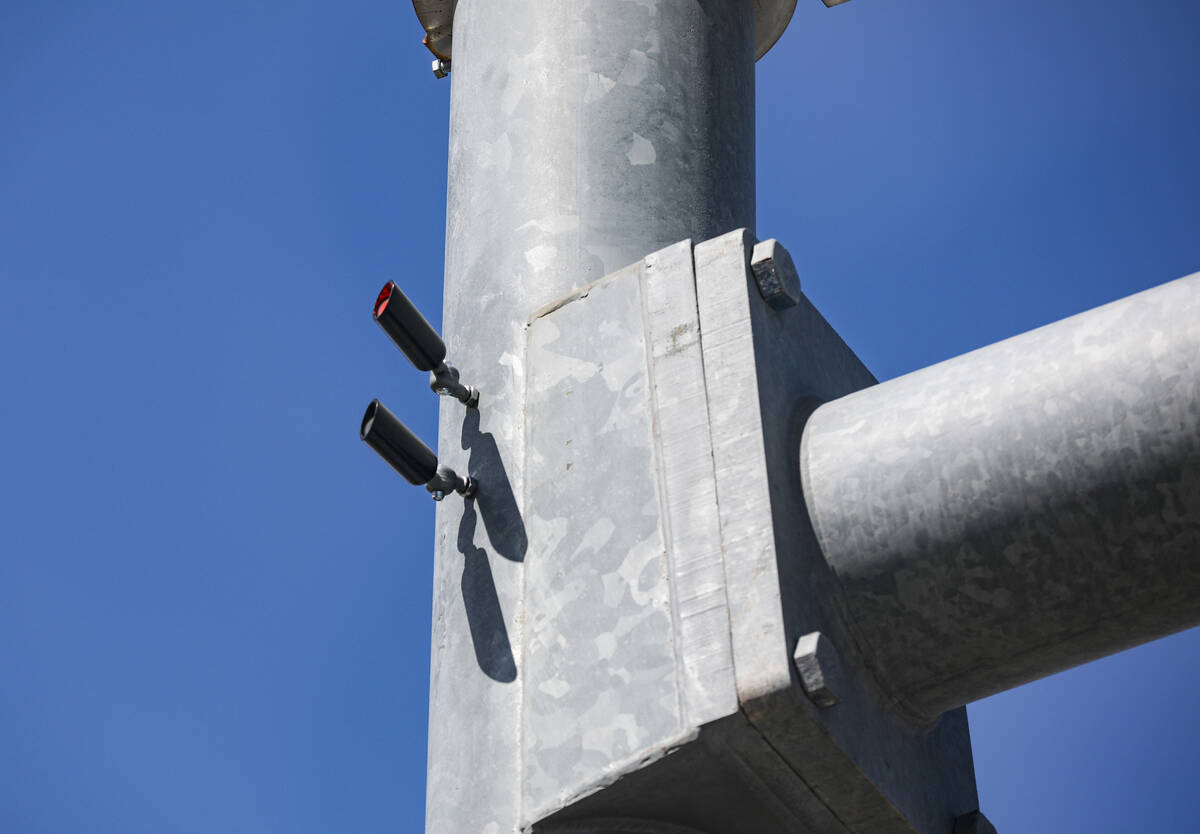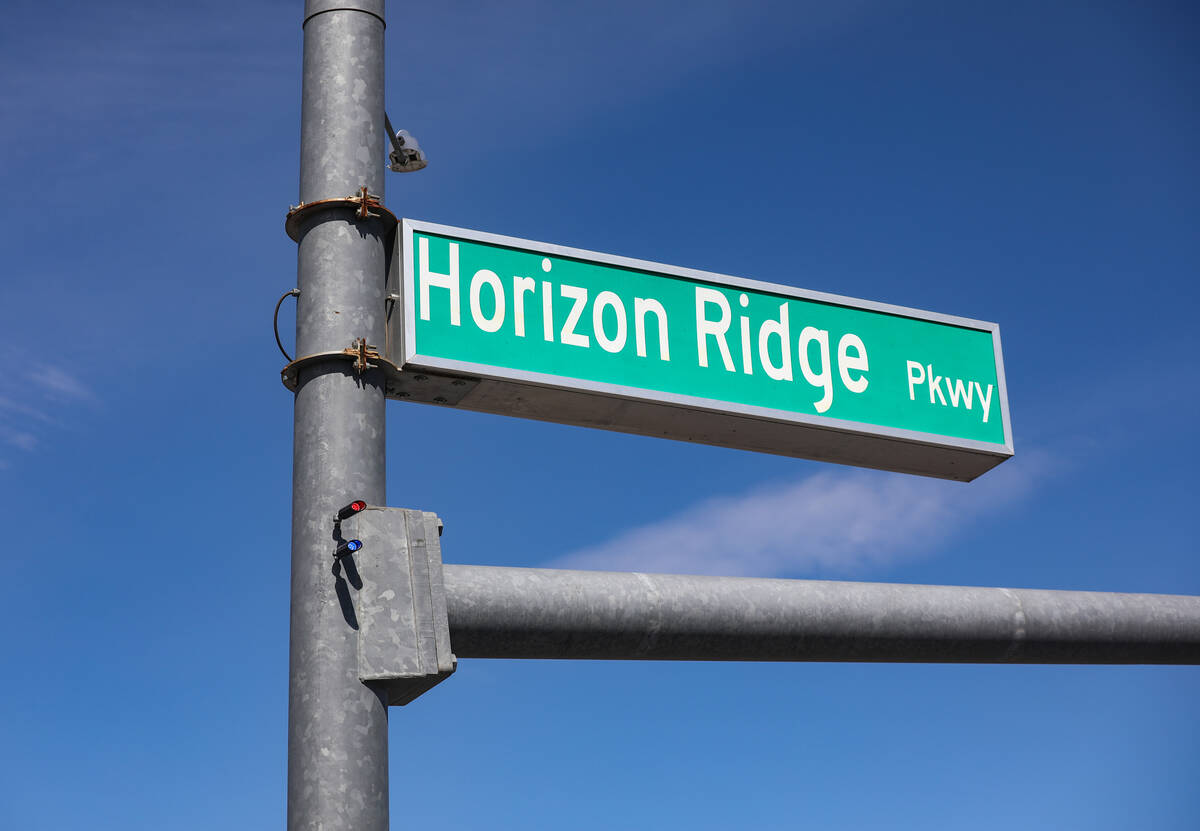Is it time for red-light cameras in Las Vegas? The sheriff thinks so
The Metropolitan Police Department’s top cop said he’s tired of his officers having to deal with “broken and mangled” bodies on Las Vegas Valley roads, the result of fatal crashes caused by bad driving.
So what does Sheriff Kevin McMahill want to do about it? Install red-light and speed cameras throughout the valley, joining a nationwide trend in traffic enforcement first launched in Arizona in 1987 that has since expanded to more than 200 communities in the United States.
Efforts to bring traffic cameras to Nevada have repeatedly failed over the years, but McMahill thinks that 2025 might be the right time.
“When you have to go out and deal with that stuff over and over, it hurts the heart, mind, body and soul of the men and women that are out here doing this work. And for me, it’s just too much,” McMahill said.
But in Nevada, police can’t install traffic cameras — yet. State law says traffic cameras can only be used when held in a police officer’s hand or installed in a police vehicle or facility.
McMahill said he is in conversation with legislators — many of whom are up for re-election in November — about changing this law during the 2025 session so cameras could provide traffic enforcement without an officer present.
For the sheriff, the issue comes down to bad driving behavior in Las Vegas, and he said a larger police presence couldn’t change this behavior the same way traffic cameras could, halting growing numbers of traffic fatalities.
The numbers
By the end of August, more than 260 people had died in fatal crashes in Nevada since the beginning of the year, according to data from Zero Fatalities, the state’s traffic safety education program. The top contributing factors were impairment and speeding.
While 2024 data will not be finalized until early 2025, so far, the number of fatalities is on track to be even higher this year.
“The fatal numbers just are not coming down,” said Anita Pepper, public information officer for the Nevada Department of Public Safety.
Erin Breen, director of UNLV’s Road Equity Alliance Project and coordinator of the school’s Traffic Safety Coalition, said she was “incensed that we are still fighting this fight.”
A longtime advocate for what she calls safety cameras, Breen said the initiative is not a new one. In “other communities, lots and lots of other communities, their fatality numbers are going down because they’ve made these choices. And ours are going up,” she said.
The most up-to-date data available from Zero Fatalities spans 2017 to 2021, according to Pepper. This data shows that around 30 percent of fatalities occurred at an intersection, and 30 percent were speeding related.
Advocates such as Breen and McMahill argue that traffic cameras can reduce these kinds of fatalities. While the Department of Public Safety does not have an official position on the legalization of traffic cameras, Pepper said that “what we do know from the data is that there’s proven benefits from using it.”
Privacy and equity concerns
The idea of bringing traffic cameras to Nevada “evokes great displeasure from a lot of people,” Breen said.
One opponent of these cameras is the American Civil Liberties Union of Nevada.
“Engaging in practices that allow for ticketing in this fashion raises a slew of different issues,” said Athar Haseebullah, the ACLU of Nevada’s executive director.
While Haseebullah said he agrees something needs to be done about the rising number of traffic fatalities, he feels Metro’s push for traffic cameras is an example of what he calls the “Nevada way” — the government engaging in bad decision making simply because something needs to change.
A key issue for the ACLU is that traffic camera deployment is usually outsourced to third parties, Haseebullah said, and these parties receive commissions on tickets.
“They incentivize going after people and raising revenue,” he said.
Another concern often raised is that traffic cameras invade privacy. But, according to McMahill, while they can’t be used for traffic enforcement, “every intersection already has a camera on it.”
“I don’t think there’s an expectation of privacy for you while you’re driving down the roadway in your vehicle,” McMahill said.
Haseebullah said the fact that public entities already track people’s movement is “the unspoken part” of the conversation surrounding traffic cameras.
“The other one is that there’s a disparate impact on minority communities,” McMahill said of common concerns surrounding the legalization of traffic cameras.
Haseebullah echoed this concern, saying that the cameras risk a disproportionately harmful impact on communities where people are already suffering from financial hardship.
McMahill said his suggestion is to start off with the 20 “highest-collision” intersections and then broaden the number of neighborhoods with cameras.
Placing cameras in certain neighborhoods that end up “paying more than their fair share” is something that Breen said has happened in other places. She feels that fees for citations should not be “unpayable.”
But just as people may struggle to pay for fines if they get caught on camera, Breen said, “they can’t afford to lose their lives either.”
Reducing fatalities
For Metro traffic bureau Sgt. Richard Rundell, traffic cameras would be “just another tool on the belt.”
Rundell said he doesn’t believe cameras would eliminate fatal crashes, but he noted that when he would be on patrol, his mere presence on the road changed drivers’ behavior.
“Whenever I was around, somehow everybody learned how to drive again,” he quipped.
Cameras, alongside a larger officer presence, could work, he said.
One of Rundell’s main goals is to slow down speeders.
“When we add speed to these collisions, that’s what’s killing people,” he said.
Rundell, Breen and Pepper all agreed that when the COVID-19 pandemic hit, cars out on the open road were driven faster.
“People were being more risky on the roads,” Pepper said.
However, those trends remained after the pandemic ended. The number of speed citations given to drivers traveling at speeds higher than 100 mph in Nevada passed 4,000 in 2020, data from the Department of Public Safety shows. Since then, numbers haven’t sunk below that figure.
Breen recalled conversations she had with fellow traffic experts during the pandemic. “We were all like, what happens if they don’t slow down?” she said. “And they didn’t.”
McMahill said he hopes that traffic cameras will break these bad habits that drivers in Las Vegas haven’t been able to shake.
Breaking these habits may come with a price, the sheriff said, as studies show that when red light cameras are installed, more rear-end crashes happen. “But they’re lower speed, and they’re not fatal,” he said.
“We’ve got to get used to actually slowing down and saving lives,” McMahill said. “That’s the intent behind what I’m trying to do.”
Contact Estelle Atkinson at eatkinson@reviewjournal.com. Follow @estellelilym on X and @estelleatkinsonreports on Instagram. Review-Journal reporter Noble Brigham contributed to this report. Contact Noble Brigham at nbrigham@reviewjournal.com. Follow @BrighamNoble on X.
DANGEROUS DRIVERS: CAN TRAFFIC CAMERAS HELP?
This is the first in a series of articles exploring proposals to change state law and allow police to use traffic cameras to ticket speeders and red light runners with the goal of reducing traffic fatalities.
Future stories will explore whether traffic cameras have reduced fatalities in other communities, whether there is the political will to change and what is already being done to curb dangerous driving on Clark County roads and freeways.
RELATED STORIES
Red-light runners should avoid these Henderson intersections
Red light cameras highlight county commissioners' wish list



